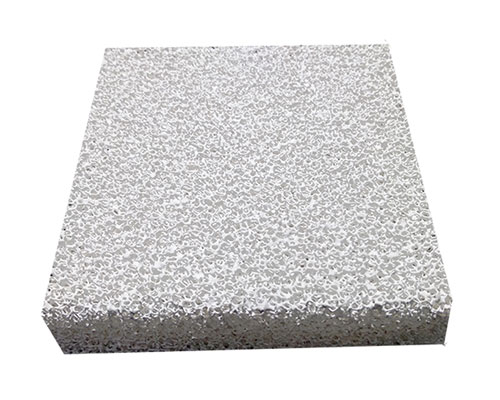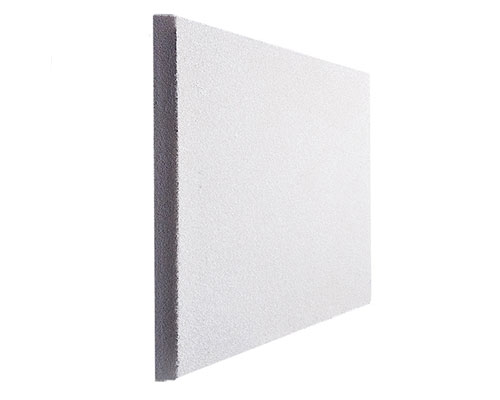The ceramic foam filter placement on the runner system is the ideal method to filter and purify the liquid metal. It is suitable for both small and medium castings and large castings.
Ceramic Foam Filter Placement Method
Vertically Placement
The molten metal slag has a lighter density and floats to the inside of the slag bag, which has a good filtering effect. Compared with the horizontal placement, this type of placement of molten metal has a faster flow rate and a good filling capacity. At the same time, the impact force of the molten metal on the ceramic foam filter is greater. This placement method is better than placing it directly on the bottom of the sprue. Compared to the sprue being laid flat, this placement is better. The molten metal is not poured directly on the filter, but the direction is changed, and the impact force is reduced. The impact force on the filter is also reduced, the sprue lays one filter flat, and the impact is shared by placing two in this way. This type of placement must take full account of the impact resistance of the filter and maintain a certain thickness of the ceramic foam filter.
Horizontally Placement
The foam ceramic filter is placed horizontally, the filling is stable, the flow rate of the molten metal is slow, the impact of the molten metal on the filter is small, and the filter is safer to use. The molten metal flows in from the upper type, and the molten metal slag has a lighter density and floats to the inside of the slag bag, thereby achieving a better filtering effect. The hydraulic simulation test shows that this method has the highest interception coefficient. Place the filter horizontally on the overlapping part of the cross runner of the parting surface. This placement method can better exert the slag blocking function of the upper half runner, with better filtering effect and easy installation.

(1) The placement form on the runner is our most recommended form. For example, a factory in Guangxi uses this placement method to produce cylinder blocks and cylinder head castings, especially if the original filter is broken, the effect is more obvious.
(2) The molten metal flows in from the lower type, the density of molten metal slag is lighter, and the molten slag floats to the surface of the filter, which will gradually reduce the passing rate of the molten metal. Consider this issue when choosing a filter. This type of placement is less, and it is only used in special molds or special casting structures.
Diagonally Placement
This placement increases the installation difficulty of the filter, is difficult to operate, and easily causes the molding sand to fall, and enters the cavity to cause slag holes.

